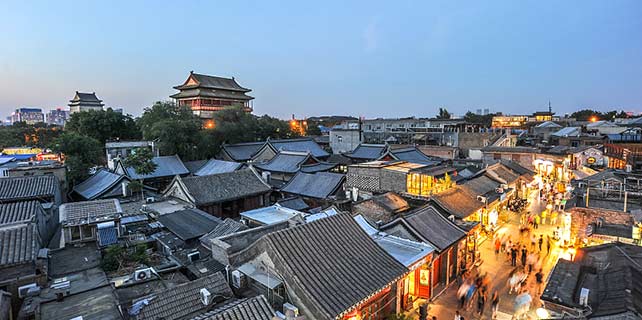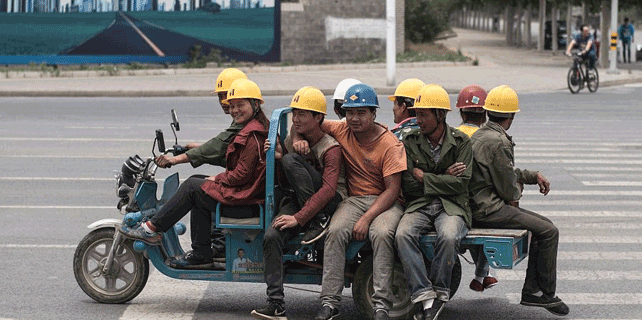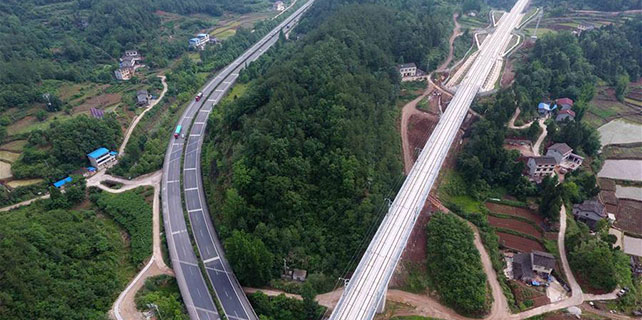Cooperation vital to build thriving bay area
To ensure a prosperous future, Macao, Hong Kong and the cities of Guangdong province must coordinate their efforts in building a top-notch bay area, a former vice-minister of commerce told China Daily.
The Greater Bay Area, compared to other free-trade zones, has been opening to the world for a long time, said Wei Jianguo, vice-president of the China Center for International Economic Exchanges.
He suggested that to turn it into a top-grade bay area, the cluster should aim to deepen the opening-up strategy, attract more foreign investment and become a rule-maker in world trade.
He said the cities in the bay area cluster, such as Hong Kong, Shenzhen, Dongguan, Huizhou and Foshan, have the potential to be the world's innovation hub as the city clusters have the country's largest population, talent pool and technology research centers.
The former vice-minister of commerce cited successful examples in the United States, Israel and Japan to show that bay areas always play crucial roles in regional economies. He also noted that the Greater Bay Area can also have profound potential in the region's development, and in deepening China's opening-up strategy.
"The GDP of the Guangdong-Hong Kong-Macao Big Bay Area city cluster has topped $1.36 trillion, outrunning the San Francisco Bay area," Wei said.
Cai Guanshen, chairman of Hong Kong-based Sunwah Group, added that by 2025, "the total GDP of the Greater Bay Area is expected to outrank the Tokyo Bay Area", topping $2.5 trillion, and will be double that number in 20 years.
The Framework Agreement on Guangdong-Hong Kong-Macao Cooperation in the Development of the Bay Area was signed earlier this month, addressing key cooperation areas including infrastructure, market integration, fueling innovation and improving the quality of life.
To achieve further prosperity in the region, he said bay area leaders should enhance the existing cooperation with the Pan-Pearl River Delta (PPRD) and make bigger use of the leading positions of Hong Kong, Guangdong and Macao.
"The bay area also develops faster than others, and we need to learn from the established bay areas from (around) the world," Wei said. "The PPRD can provide solid support for the big bay area strategy with its abundant labor, talent pool, market and materials. While the PPRD can transfer its industries, technology and skilled workers into the bay area, Hong Kong, Guangdong and Macao can act as leaders to lift the economy in the PPRD up with its advantages."
Wei said cities with vigor and vitality such as Shenzhen and Dongguan can further drive demand while Guangzhou and Hong Kong can push the service industry forward. He suggested the area can host more international art festivals, promote its tourism and fashion industries, turning the area into a world-class city cluster of high-end design.
The Guangdong-Hong Kong-Macao Big Bay Area is also a window to the Chinese culture, showcasing the country's soft power, as it combines unique folk culture of Hakka-speaking people, the Chaozhou-Shantou region, known for overseas Chinese, Hong Kong and Macao.
However, Wei pointed out, there are still hurdles to overcome in the process of building a top-notch big bay area.
During past attempts to cooperate with the PPRD, he said, the cities only minded their own business instead of aiming for a common goal, sometimes refusing to push the industrial transfer to lower-grade cities.
"We need to innovate in the economic system that can work in Hong Kong, Macao and Guangdong, where two types of economic systems are applied," Wei said. "And we also need to make use of each other's advantages."
Hong Kong, as an important post of the bay area, should play a bigger role in the world's economy rather than just as a bridge between China and the rest of the world, since China has already become the world's second-largest economy.
"Hong Kong has been crucial for the mainland's economic growth and its opening-up to the world," he said. "The past 20 years has seen booming prosperity in both the mainland and Hong Kong, especially after the implementation of CEPA (Closer Economic Partnership Agreement) in 2004. "Trade between the two has increased more than six-fold since 1996, leapfrogging from $40.7 billion annually to $305 billion in 2016," he said.
Contact the writers at renxiaojin@chinadaily.com.cn




















